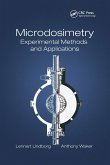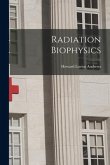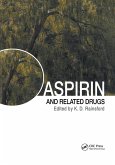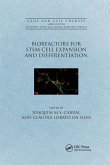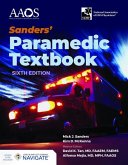Textbook of Ion Channels
Three Volume Set
Herausgeber: Zheng, Jie; Trudeau, Matthew C.
Textbook of Ion Channels
Three Volume Set
Herausgeber: Zheng, Jie; Trudeau, Matthew C.
- Broschiertes Buch
- Merkliste
- Auf die Merkliste
- Bewerten Bewerten
- Teilen
- Produkt teilen
- Produkterinnerung
- Produkterinnerung
This three-volume textbook provides a wide-ranging reference source on ion channels for students, instructors, and researchers. They give an introduction to fundamental concepts, a guide to technical research aspects and the properties of major ion channel families, and coverage of key roles.
Andere Kunden interessierten sich auch für
![Microdosimetry Microdosimetry]() Lennart LindborgMicrodosimetry72,99 €
Lennart LindborgMicrodosimetry72,99 €![Relative Biological Effectiveness in Ion Beam Therapy: Technical Report Series #461 Relative Biological Effectiveness in Ion Beam Therapy: Technical Report Series #461]() Relative Biological Effectiveness in Ion Beam Therapy: Technical Report Series #461114,99 €
Relative Biological Effectiveness in Ion Beam Therapy: Technical Report Series #461114,99 €![Radiation Biophysics Radiation Biophysics]() Howard Lucius AndrewsRadiation Biophysics28,99 €
Howard Lucius AndrewsRadiation Biophysics28,99 €![The Perfect Baby The Perfect Baby]() Glenn McgeeThe Perfect Baby33,99 €
Glenn McgeeThe Perfect Baby33,99 €![Aspirin and Related Drugs Aspirin and Related Drugs]() Aspirin and Related Drugs96,99 €
Aspirin and Related Drugs96,99 €![Bioreactors for Stem Cell Expansion and Differentiation Bioreactors for Stem Cell Expansion and Differentiation]() Bioreactors for Stem Cell Expansion and Differentiation73,99 €
Bioreactors for Stem Cell Expansion and Differentiation73,99 €![Sanders' Paramedic Textbook with Navigate Advantage Access Sanders' Paramedic Textbook with Navigate Advantage Access]() Mick J SandersSanders' Paramedic Textbook with Navigate Advantage Access674,99 €
Mick J SandersSanders' Paramedic Textbook with Navigate Advantage Access674,99 €-
-
-
This three-volume textbook provides a wide-ranging reference source on ion channels for students, instructors, and researchers. They give an introduction to fundamental concepts, a guide to technical research aspects and the properties of major ion channel families, and coverage of key roles.
Hinweis: Dieser Artikel kann nur an eine deutsche Lieferadresse ausgeliefert werden.
Hinweis: Dieser Artikel kann nur an eine deutsche Lieferadresse ausgeliefert werden.
Produktdetails
- Produktdetails
- Verlag: Taylor & Francis Ltd
- Seitenzahl: 1064
- Erscheinungstermin: 6. Juli 2023
- Englisch
- Abmessung: 184mm x 264mm x 69mm
- Gewicht: 2674g
- ISBN-13: 9781032424286
- ISBN-10: 1032424281
- Artikelnr.: 69797882
- Herstellerkennzeichnung
- Libri GmbH
- Europaallee 1
- 36244 Bad Hersfeld
- gpsr@libri.de
- Verlag: Taylor & Francis Ltd
- Seitenzahl: 1064
- Erscheinungstermin: 6. Juli 2023
- Englisch
- Abmessung: 184mm x 264mm x 69mm
- Gewicht: 2674g
- ISBN-13: 9781032424286
- ISBN-10: 1032424281
- Artikelnr.: 69797882
- Herstellerkennzeichnung
- Libri GmbH
- Europaallee 1
- 36244 Bad Hersfeld
- gpsr@libri.de
Jie Zheng, PhD, is a professor at the University of California Davis School of Medicine, where he has served as a faculty member in the Department of Physiology and Membrane Biology since 2004. Dr. Zheng earned a bachelor's degree in physiology and biophysics (1988) and a master's degree in biophysics (1991) at Peking University. He earned a PhD in physiology (1998) at Yale University, where he studied with Dr. Fredrick J. Sigworth on patch-clamp recording, single-channel analysis, and voltage-dependent activation mechanisms. He received his postdoctoral training at the Howard Hughes Medical Institute (HHMI) and the University of Washington during 1999-2003, working with Dr. William N. Zagotta on the cyclic nucleotide-gated channels activation mechanism and novel fluorescence techniques for ion channel research. Currently, Dr. Zheng's research focuses on temperature-sensitive TRP channels. Matthew C. Trudeau, PhD, is a professor in the Department of Physiology at the University of Maryland School of Medicine in Baltimore, Maryland. He earned a bachelor's degree in biochemistry and molecular biology in 1992 and a PhD in physiology in 1998 while working with Gail Robertson, PhD, at the University of Wisconsin-Madison. His thesis work was on the properties of voltage-gated potassium channels in the human ether-aì-go-go related gene (hERG) family and the role of these channels in heart disease. Dr. Trudeau was a postdoctoral fellow with William Zagotta, PhD, at the University of Washington and the Howard Hughes Medical Institute (HHMI) in Seattle from 1998 to 2004, where he focused on the molecular physiology of cyclic nucleotide-gated ion channels, the mechanism of their modulation by calcium-calmodulin, and their role in an inherited form of vision loss. Currently, Dr. Trudeau's work focuses on hERG potassium channels, their biophysical mechanisms, and their role in cardiac physiology and cardiac arrhythmias.
Volume I 1. Ion Selectivity and Conductance 2. Voltage-Dependent Gating of
Ion Channels 3. Ligand-Dependent Gating Mechanism 4. Mechanosensitive
Channels and Their Emerging Gating Mechanisms 5. Inactivation and
Desensitization 6. Ion Channel Inhibitors 7. Expression of Channels in
Heterologous Systems and Voltage Clamp Recordings of Macroscopic Currents
8. Patch Clamping and Single-Channel Analysis 9. Patch Clamp Recordings
from Native Cells and Isolation of Membrane Currents 10. Models of Ion
Channel Gating 11. Investigating Ion Channel Structure and Dynamics Using
Fluorescence Spectroscopy 12. Ion Channel Structural Biology in the Era of
Single Particle Cryo-EM 13. Protein Crystallography 14. Rosetta Structural
Modeling 15. Molecular Dynamics 16. Genetic Models and Transgenics 17. EPR
and DEER Spectroscopy Volume II 1. Taxonomy and Evolution of Ion Channels
2. Voltage-Gated Sodium Channels 3. Voltage-Gated Calcium Channels 4.
Voltage-Gated Potassium Channels 5. ERG Family of K Channels 6. KCNQ
Channels 7. BK Channels 8. Small-Conductance Calcium-Activated Potassium
(SK) Channels 9. Inward Rectifier Potassium Channels 10. Two-Pore Domain
Potassium Channels 11. Cyclic Nucleotide-Gated Channels 12. HCN Channels
13. CLC Chloride Channels and Transporters 14. Ca-Activated Cl- Channels
15: Acetylcholine Receptors 16. Ionotropic Glutamate Receptors 17. 5-HT3
Receptors 18. GABAA Receptors 19. Glycine Receptors 20. Acid Sensing Ion
Channels 21: ENaC Channels 22. TRPC Channels 23. TRPM Channels 24. TRPV
Channels 25. Store-Operated CRAC Channels 26. Piezo Channels 27. Ryanodine
Receptors 28. Proton Channels 29. P2X Receptors Volume III 1. Alternative
Splicing 2. Calmodulin Regulation of Ion Channels 3. Mechanism of G-protein
Regulation of Ion Channels 4. Regulation of Ion Channels by Membrane Lipids
5. Ion Channels of the Heart 6. Ion Channels in Sperm and Eggs 7. Ion
Channels in Immune Cells 8. Ion Channels in Epilepsy 9. Ion Channels in
Pain 10. Cystic Fibrosis and the CFTR Anion Channels 11. CLC-Related
Proteins in Diseases 12. KATP Channels and the Regulation of Insulin
Secretion
Ion Channels 3. Ligand-Dependent Gating Mechanism 4. Mechanosensitive
Channels and Their Emerging Gating Mechanisms 5. Inactivation and
Desensitization 6. Ion Channel Inhibitors 7. Expression of Channels in
Heterologous Systems and Voltage Clamp Recordings of Macroscopic Currents
8. Patch Clamping and Single-Channel Analysis 9. Patch Clamp Recordings
from Native Cells and Isolation of Membrane Currents 10. Models of Ion
Channel Gating 11. Investigating Ion Channel Structure and Dynamics Using
Fluorescence Spectroscopy 12. Ion Channel Structural Biology in the Era of
Single Particle Cryo-EM 13. Protein Crystallography 14. Rosetta Structural
Modeling 15. Molecular Dynamics 16. Genetic Models and Transgenics 17. EPR
and DEER Spectroscopy Volume II 1. Taxonomy and Evolution of Ion Channels
2. Voltage-Gated Sodium Channels 3. Voltage-Gated Calcium Channels 4.
Voltage-Gated Potassium Channels 5. ERG Family of K Channels 6. KCNQ
Channels 7. BK Channels 8. Small-Conductance Calcium-Activated Potassium
(SK) Channels 9. Inward Rectifier Potassium Channels 10. Two-Pore Domain
Potassium Channels 11. Cyclic Nucleotide-Gated Channels 12. HCN Channels
13. CLC Chloride Channels and Transporters 14. Ca-Activated Cl- Channels
15: Acetylcholine Receptors 16. Ionotropic Glutamate Receptors 17. 5-HT3
Receptors 18. GABAA Receptors 19. Glycine Receptors 20. Acid Sensing Ion
Channels 21: ENaC Channels 22. TRPC Channels 23. TRPM Channels 24. TRPV
Channels 25. Store-Operated CRAC Channels 26. Piezo Channels 27. Ryanodine
Receptors 28. Proton Channels 29. P2X Receptors Volume III 1. Alternative
Splicing 2. Calmodulin Regulation of Ion Channels 3. Mechanism of G-protein
Regulation of Ion Channels 4. Regulation of Ion Channels by Membrane Lipids
5. Ion Channels of the Heart 6. Ion Channels in Sperm and Eggs 7. Ion
Channels in Immune Cells 8. Ion Channels in Epilepsy 9. Ion Channels in
Pain 10. Cystic Fibrosis and the CFTR Anion Channels 11. CLC-Related
Proteins in Diseases 12. KATP Channels and the Regulation of Insulin
Secretion
Volume I 1. Ion Selectivity and Conductance 2. Voltage-Dependent Gating of
Ion Channels 3. Ligand-Dependent Gating Mechanism 4. Mechanosensitive
Channels and Their Emerging Gating Mechanisms 5. Inactivation and
Desensitization 6. Ion Channel Inhibitors 7. Expression of Channels in
Heterologous Systems and Voltage Clamp Recordings of Macroscopic Currents
8. Patch Clamping and Single-Channel Analysis 9. Patch Clamp Recordings
from Native Cells and Isolation of Membrane Currents 10. Models of Ion
Channel Gating 11. Investigating Ion Channel Structure and Dynamics Using
Fluorescence Spectroscopy 12. Ion Channel Structural Biology in the Era of
Single Particle Cryo-EM 13. Protein Crystallography 14. Rosetta Structural
Modeling 15. Molecular Dynamics 16. Genetic Models and Transgenics 17. EPR
and DEER Spectroscopy Volume II 1. Taxonomy and Evolution of Ion Channels
2. Voltage-Gated Sodium Channels 3. Voltage-Gated Calcium Channels 4.
Voltage-Gated Potassium Channels 5. ERG Family of K Channels 6. KCNQ
Channels 7. BK Channels 8. Small-Conductance Calcium-Activated Potassium
(SK) Channels 9. Inward Rectifier Potassium Channels 10. Two-Pore Domain
Potassium Channels 11. Cyclic Nucleotide-Gated Channels 12. HCN Channels
13. CLC Chloride Channels and Transporters 14. Ca-Activated Cl- Channels
15: Acetylcholine Receptors 16. Ionotropic Glutamate Receptors 17. 5-HT3
Receptors 18. GABAA Receptors 19. Glycine Receptors 20. Acid Sensing Ion
Channels 21: ENaC Channels 22. TRPC Channels 23. TRPM Channels 24. TRPV
Channels 25. Store-Operated CRAC Channels 26. Piezo Channels 27. Ryanodine
Receptors 28. Proton Channels 29. P2X Receptors Volume III 1. Alternative
Splicing 2. Calmodulin Regulation of Ion Channels 3. Mechanism of G-protein
Regulation of Ion Channels 4. Regulation of Ion Channels by Membrane Lipids
5. Ion Channels of the Heart 6. Ion Channels in Sperm and Eggs 7. Ion
Channels in Immune Cells 8. Ion Channels in Epilepsy 9. Ion Channels in
Pain 10. Cystic Fibrosis and the CFTR Anion Channels 11. CLC-Related
Proteins in Diseases 12. KATP Channels and the Regulation of Insulin
Secretion
Ion Channels 3. Ligand-Dependent Gating Mechanism 4. Mechanosensitive
Channels and Their Emerging Gating Mechanisms 5. Inactivation and
Desensitization 6. Ion Channel Inhibitors 7. Expression of Channels in
Heterologous Systems and Voltage Clamp Recordings of Macroscopic Currents
8. Patch Clamping and Single-Channel Analysis 9. Patch Clamp Recordings
from Native Cells and Isolation of Membrane Currents 10. Models of Ion
Channel Gating 11. Investigating Ion Channel Structure and Dynamics Using
Fluorescence Spectroscopy 12. Ion Channel Structural Biology in the Era of
Single Particle Cryo-EM 13. Protein Crystallography 14. Rosetta Structural
Modeling 15. Molecular Dynamics 16. Genetic Models and Transgenics 17. EPR
and DEER Spectroscopy Volume II 1. Taxonomy and Evolution of Ion Channels
2. Voltage-Gated Sodium Channels 3. Voltage-Gated Calcium Channels 4.
Voltage-Gated Potassium Channels 5. ERG Family of K Channels 6. KCNQ
Channels 7. BK Channels 8. Small-Conductance Calcium-Activated Potassium
(SK) Channels 9. Inward Rectifier Potassium Channels 10. Two-Pore Domain
Potassium Channels 11. Cyclic Nucleotide-Gated Channels 12. HCN Channels
13. CLC Chloride Channels and Transporters 14. Ca-Activated Cl- Channels
15: Acetylcholine Receptors 16. Ionotropic Glutamate Receptors 17. 5-HT3
Receptors 18. GABAA Receptors 19. Glycine Receptors 20. Acid Sensing Ion
Channels 21: ENaC Channels 22. TRPC Channels 23. TRPM Channels 24. TRPV
Channels 25. Store-Operated CRAC Channels 26. Piezo Channels 27. Ryanodine
Receptors 28. Proton Channels 29. P2X Receptors Volume III 1. Alternative
Splicing 2. Calmodulin Regulation of Ion Channels 3. Mechanism of G-protein
Regulation of Ion Channels 4. Regulation of Ion Channels by Membrane Lipids
5. Ion Channels of the Heart 6. Ion Channels in Sperm and Eggs 7. Ion
Channels in Immune Cells 8. Ion Channels in Epilepsy 9. Ion Channels in
Pain 10. Cystic Fibrosis and the CFTR Anion Channels 11. CLC-Related
Proteins in Diseases 12. KATP Channels and the Regulation of Insulin
Secretion


